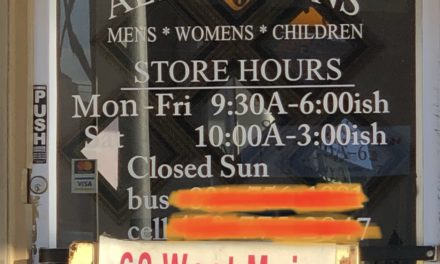Our most loyal customers see us on our best and worst days. The ways we prepare for and handle the worst days may be the way we are making them more or less loyal to our business.
Happy Cyber Monday! It is anticipated by some, this will be the single largest online consumption or purchasing of products in history; for context, 2017 saw an estimated $6.6 billion dollars spend on Cyber Monday and only, ha, an estimated $5.3 on black Friday. We have become extremely dependent on technology working just as we expect it to and sometimes now find ourselves more frustrated with slow internet than we do with slow traffic…Don’t text and drive!
The Sunday after Thanksgiving is the single busiest travel day of the year given the concentrated time at which people have to get back to work after a four-day weekend versus the spread out
Recently I was reminded of our over-dependence on technology and the extreme busyness of the travel around Thanksgiving. And as such, the challenges it can push to and put on the customer experience.
As my family was preparing to depart for our Thanksgiving plans, I had the responsibility of ensuring that the family wagon was completely filled with gas and that the appropriate snacks were available to keep all travelers happy for the four hour drive we would be taking over the river and through the woods to grandmothers house…we go.
At my first stop for petrol and the salty and the sweet, I saw the dreaded flocking of cars parked at the pump and people heading into the convenient store. I soon knew why there was so much migration inward. As I swiped my credit card and then saw the ‘please see the clerk inside’ message.
Upon entering the store myself I saw a long line and only one of two registers open and taking customers. I then frequently heard ‘I’m sorry about that, our systems are down we can only accept cash at this time’ from the two clerks who are working in tandem; one punching numbers into the calculator as the other manually completed a sale with the customer at the til.
It was clear that only one of the two behind the counter had ever prepared themselves or had been trained to accept cash as the primary source of payment or how to manually calculate taxes etc. using a hand calculator. I wanted to quickly format a Google Sheet on the smartphone that one cashier was, and should not have been, holding in one hand while trying to help customers in an ever-growing long line. I could have quickly formatted it with a column for taxable items and one for non-taxable items etc. to help her speed up the process. There could have been drop downs for gas with the right taxes, etc. I was born for this and it would have been awesome!!! I digress.
Perhaps the most telling experience I honed in on was the customer who wanted to purchase an item that the clerk didn’t know the price of. He had clearly purchased that item at this location before many times. The less prepared clerk tried to interrupt the more experienced clerk several times asking how much this item cost. The customer answered the clerk three times stating the price. The flustered clerk continued to ask the peer, flustering that clerk and further frustrating the growing line of customers.
When things are at there worse we hope we have prepared our teams to be at there best. Let’s look at a few things we can do in the calm, while increasing the trust and support of our employees and customers in, the storms that will come.
- Openly admit there are going to be bad days. Credit card readers will fail. Someone will call in sick. The delivery will be late. While you can’t plan for all issues that will arise, starting from a transparent point that you know that issues will arise is a healthy start for everyone’s mindset. And starts building trust early
- Point number one is no excuse to not plan, train and prepare. Have the calculator and printed tax rules in the drawer. Manage inventory well ahead of holidays. Know your business well enough and share that knowledge with your employees to be prepared for the most likely issues that will come.
- Trust your customers and give them the benefit of the doubt during times of issues. They are equally as frustrated as you and at least as invested in the fix as you. So what if you give a little discount to a customer during the issue or you take their word for what something cost when you don’t? These will pay dividends with how the customers feel about you and their trust will increase in your handling of challenges in the future. They likely had nothing to do with the issue so swift action to make their impact of the issue less is a big thing; see Turner’s quick refunds around the much-publicized golf event between Tiger and Phil.
- Utilize what your employees are already utilizing. The number of hands-on a smartphone while “working” is amazing to me. In a challenging situation, set an expectation that they can, and maybe even should, be using it to lessen the impact on a customer during an issue. Google sheets are easy to set-up for a few simple transactions and remove some issues of a calculator by keeping the numbers you’ve already enter
visible . Having a credit card reader that plugs in a smartphone would be an easy workaround in some network outages. Even seeing an employee trying to use their device to help with an issue is better than guessing that they are checking social media while the customer suffers. - Reward the employees that are creative in working through the issues. Just like not being able to predict every issue before it comes, you don’t have all the answers for solving the issues. You hired smart people for some of that and that is the smart thing you have done. Let your employees adlib some of the problem-solving. Reward what worked really well, learn from it and get it in the playbook going forward.
Our most loyal customers see us on our best and worst days. The ways we prepare for and handle the worst days may be the way we are making them more or less loyal to our business.






What is being talked about…